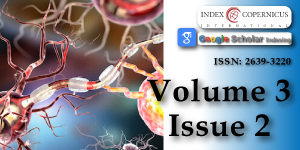Tamsulosin and Dementia in old age: Is there any relationship?
Main Article Content
Abstract
Tamsulosin is used to treat Benign Prostatic Hyperplasia (BPH), prescribed annually to about 12.6 million patients worldwide. It is an alpha-adrenergic antagonist that reduces the tone of the prostate smooth muscle involved in the pathophysiology of BPH. By acting on alpha 1A receptors, predominant in the prostate, tamsulosin also acts on receptors present in the brain. This study consisted of a literature review aimed at disseminating scientific knowledge about the relationship between the use of tamsulosin and the onset of dementia. PubMed, Scopus, Scielo, Embase, and Web of Science studies involving dementia in patients using tamsulosin in the last five years were selected. The review showed a risk correlation and a higher incidence of dementia in treated patients. The risk ratio, when compared to other medicines, approached 1.20. In conclusion, it was identified the need for clinical trials with higher sampling power to increase relational significance due to the high prevalence of BPH and the extensive use of tamsulosin in elderly patients with the disease.
Article Details
Copyright (c) 2019 do Monte RRL, et al.

This work is licensed under a Creative Commons Attribution 4.0 International License.
Egan KB. The Epidemiology of Benign Prostatic Hyperplasia Associated with Lower Urinary Tract Symptoms: Prevalence and Incident Rates. Urol Clin North Am. 2016; 43: 289-297. PubMed: https://www.ncbi.nlm.nih.gov/pubmed/27476122
Chughtai B, Forde JC, Thomas DD, Laor L, Hossack T, et al. Benign prostatic hyperplasia. Nat Rev Dis Primers. 2016; 2: 16031. PubMed; https://www.ncbi.nlm.nih.gov/pubmed/27147135
lrich S. Differential prescription behavior in benign prostatic syndrome may explain relationship found between tamsulosin and dementia. Pharmacoepidemiol Drug Saf. 2018; 27: 1157-1158. PubMed: https://www.ncbi.nlm.nih.gov/pubmed/30255606
Frankel JK, Duan Y, Albertsen PC. Is Tamsulosin Linked to Dementia in the Elderly? Curr Urol Rep. 2018; 19: 69. PubMed: https://www.ncbi.nlm.nih.gov/pubmed/29971698
Roehrborn CG, Oyarzabal Perez I, Roos EP, Calomfirescu N, Brotherton B, et al. Efficacy and safety of a fixed-dose combination of dutasteride and tamsulosin treatment (Duodart(®)) compared with watchful waiting with initiation of tamsulosin therapy if symptoms do not improve, both provided with lifestyle advice, in the management of treatment-naïve men with moderately symptomatic benign prostatic hyperplasia: 2-year CONDUCT study results. BJU Int. 2015; 116: 450-459. PubMed: https://www.ncbi.nlm.nih.gov/pubmed/25565364
Gill SS, Bai AD. Beta testing the potential link between the alpha antagonist tamsulosin and dementia. Pharmacoepidemiol Drug Saf. 2018; 27: 349-350. PubMed: https://www.ncbi.nlm.nih.gov/pubmed/29341324
Madersbacher S, Michel MC. Re: Tamsulosin and the Risk of Dementia in Older Men with Benign Prostatic Hyperplasia. Eur Urol. 2018; 74: 522-523. PubMed: https://www.ncbi.nlm.nih.gov/pubmed/30057132
Kosilov K, Kuzina I, Kuznetsov V, Gainullina Y, Kosilova L, et al. Cognitive functions and health-related quality of life in men with benign prostatic hyperplasia and symptoms of overactive bladder when treated with a combination of tamsulosin and solifenacin in a higher dosage. Aging Male. 2018; 21: 121-129. PubMed: https://www.ncbi.nlm.nih.gov/pubmed/29113548
Nikolic K, Filipic S, Smoliński A, Kaliszan R, Agbaba D. Partial least square and hierarchical clustering in ADMET modeling: prediction of blood-brain barrier permeation of α-adrenergic and imidazoline receptor ligands. J Pharm Pharm Sci. 2013; 16: 622-647. PubMed: https://www.ncbi.nlm.nih.gov/pubmed/24210068
Duan Y, Grady JJ, Albertsen PC, Helen Wu Z. Tamsulosin and the risk of dementia in older men with benign prostatic hyperplasia. Pharmacoepidemiol Drug Saf. 2018; 27: 340-348. PubMed: https://www.ncbi.nlm.nih.gov/pubmed/29316005
Szot P, White SS, Greenup JL, Leverenz JB, Peskind ER. Changes in adrenoreceptors in the prefrontal cortex of subjects with dementia: evidence of compensatory changes. Neuroscience. 2007; 146: 471-480. PubMed: https://www.ncbi.nlm.nih.gov/pubmed/17324522





